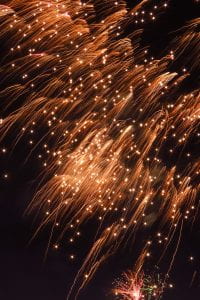
Naomi’s Photos
This post is a direct continuation of my previous post:
BUT SERIOUSLY, EFL STUDENTS, MEETING A COW WILL HELP YOU PREPARE FOR YOUR EXAMS!
In that post, I explained how the gaps in struggling students’ general knowledge about the world hinder their performance on reading comprehension tasks regularly.
“The gaps in general knowledge are most striking when it comes to texts related to environmental issues. There are many such texts in our practice books and exams.”
Well, the amount of trash/debris cluttering up outer space is also an environmental issue. It’s time to push the boundaries of the students’ world knowledge and help them visualize the topic.

Naomi’s Photos
But first, a quick detour.
I began this “general knowledge project” with the video about cows and the environment (see aforementioned previous post) adding captions on a website called veed.io.
It really wasn’t particularly challenging to add captions using this website!
Video number two, on the topic of wild animals moving into the city also worked when using the site, despite its length. The site allows you to “chop off” a bit! My students were interested in the topic despite the fact the video is longer than the one about the cows. A few of them even had stories of animal sightings to share. I shared a picture of a jackal that I had taken, too.
Here is the original video. I’ve added a link to the captioned version (Hebrew captioning) below.
This is a link to a slightly shortened version of the video with Hebrew captioning. The captions have been edited for length and clarity.
https://www.veed.io/view/38f0c2fe-8513-4db2-9864-e879c8cfd9a0
Now, back to outer space…
The same captioning site did not work well with the video below. The helpful captioning in English on the original (which I think is good for learners, regardless of the status of their hearing) is large and appears in different places on different scenes.
More importantly…
The topic of space debris and the dangers it poses when hurtling around outer space is much more complex and includes more terminology than the previous videos did.
It’s much easier to take in the clear visuals and read the text properly when you stop the video frequently.
But who wants to stop a video frequently on their own initiative? Especially if viewed in class?
Fortunately, I have a wonderful 10th-grade computer whiz volunteering in my classroom – Amitay Merhav. Amitay translated the captions and spent time trying different captioning options to find one that works for my students.
For this video, we decided to use Edpuzzle, which I used to use intensively, but haven’t done so in recent years.
In this viewing mode, you see the English captions first, then the Hebrew version, and then the video stops completely until you hit the “continue” button.
In short, the viewer controls the pace.
Captions in any language can be added this way.
Or questions about the text.
When the video stops there is time to think.
Here is the original video. The link to the version with Hebrew captioning, the one with the pauses, appears below.
Here’s the link to the captioned video:
https://edpuzzle.com/media/61bf18b89b9e1c4304b36977
If you have any suitable videos to suggest, please do so in the comments. It would be great to have a video library of visuals related to common topics in course books and on exams!
